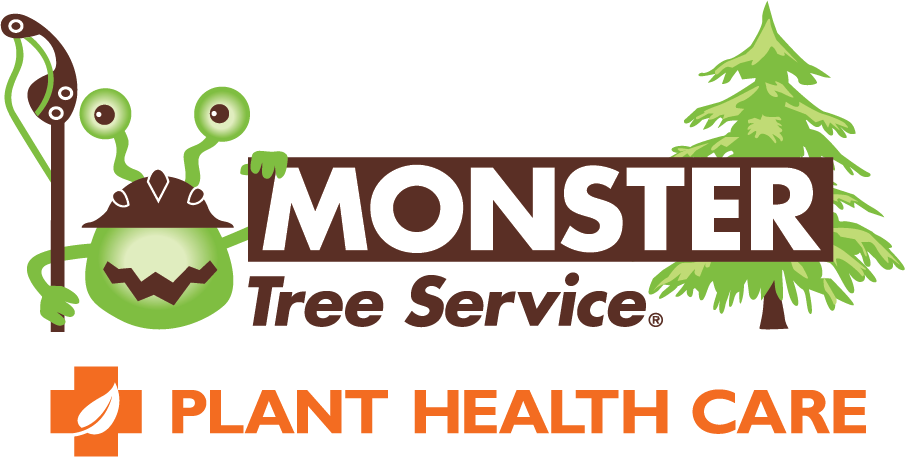
![]()
Pine Trees Under Siege: Examining Invasive Beetles in Western New York
Pine beetles are a group of insects that can cause significant damage to pine trees and other conifers. While they are more commonly found in the western United States and Canada, there are a few species of pine beetles that can be found in Western New York. The pine bark beetle, pine shoot beetle, and white pine weevil are among the most common pine beetles found in the region. These beetles can cause significant damage to trees, often resulting in branch dieback, crown thinning, and even tree death. Understanding the signs of a pine pest infestation and taking proactive measures to manage these pests can help protect your trees and maintain a healthy forest ecosystem in our area.
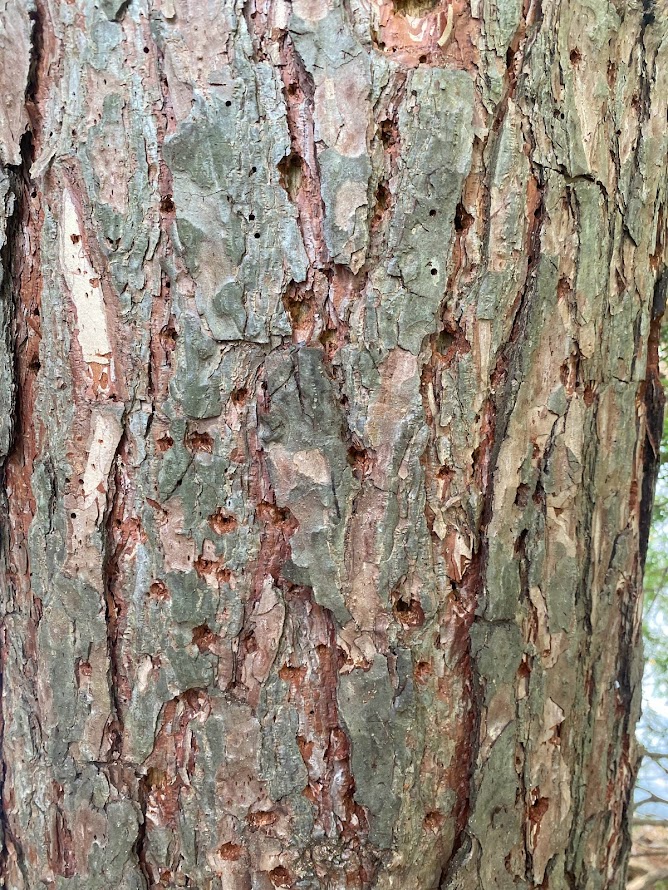
The exit holes on this Scotch Pine are a key sign of a boring insect infestation.
The pine bark beetle can cause significant damage to pine trees in the Eastern US, including Western New York. The species of pine trees that are most attacked by pine beetles include Scotch Pine, Red Pine, and Eastern White Pine. However, the beetles may also attack other species of conifers, such as spruce and fir, if their preferred host species are not available.
The following are some signs of a pine bark beetle infestation:
- Needle loss: Infested trees may have a canopy that appears bare due to needle loss. This is because the beetles burrow into the bark and create galleries that disrupt the tree's ability to transport nutrients and water.
- Change in needle color: Infested trees that have not lost their needles may retain them with a brown or yellow appearance.
- Presence of sawdust and frass: Beetles create small holes in the bark of trees as they bore into the wood. As they do so, they produce sawdust and excrement (frass) that accumulates at the base of the tree or in the crevices of the bark.
- Presence of pitch tubes: Pitch tubes are small blobs of resin that are produced by the tree as a defense mechanism against the beetles. They can be seen on the trunk or branches of infested trees.
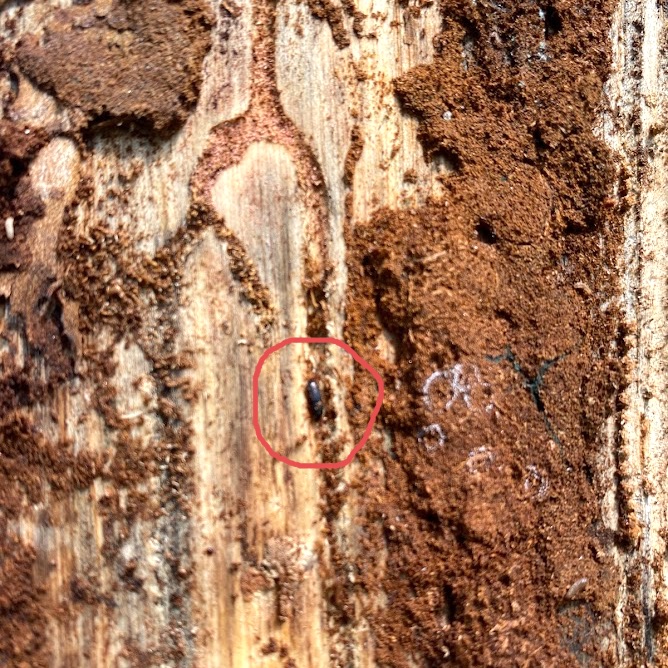
This pine bark beetle was exposed by pulling back the bark on a tree that was marked for removal. You can see the galleries it made beneath the bark. Do not remove bark from trees as this can cause stress and decline.
Pine shoot beetles are another type of insect that can cause damage to the shoots and leaders of pine trees. Unlike the bark beetle, shoot beetles will be found on the branches rather than the trunk. Pine shoot beetles typically prefer Austrian Pine, Eastern White Pine, Scotch Pine, and Mugo Pine. The following are some signs that you may have pine shoot beetles on your tree:
- Stunted growth: Infested trees may have stunted or distorted growth due to damage to the new shoots and leaders.
- Shoot dieback: Infested shoots may turn yellow or brown and eventually die back, causing the tree to have a sparse or thin appearance.
- Presence of holes: Pine shoot beetles create small holes in the bark of the shoots and leaders, which can be seen upon close inspection.
- Presence of frass: As the beetles bore into the shoots and leaders, they produce sawdust-like frass that accumulates at the base of the shoots or in the crevices of the bark.
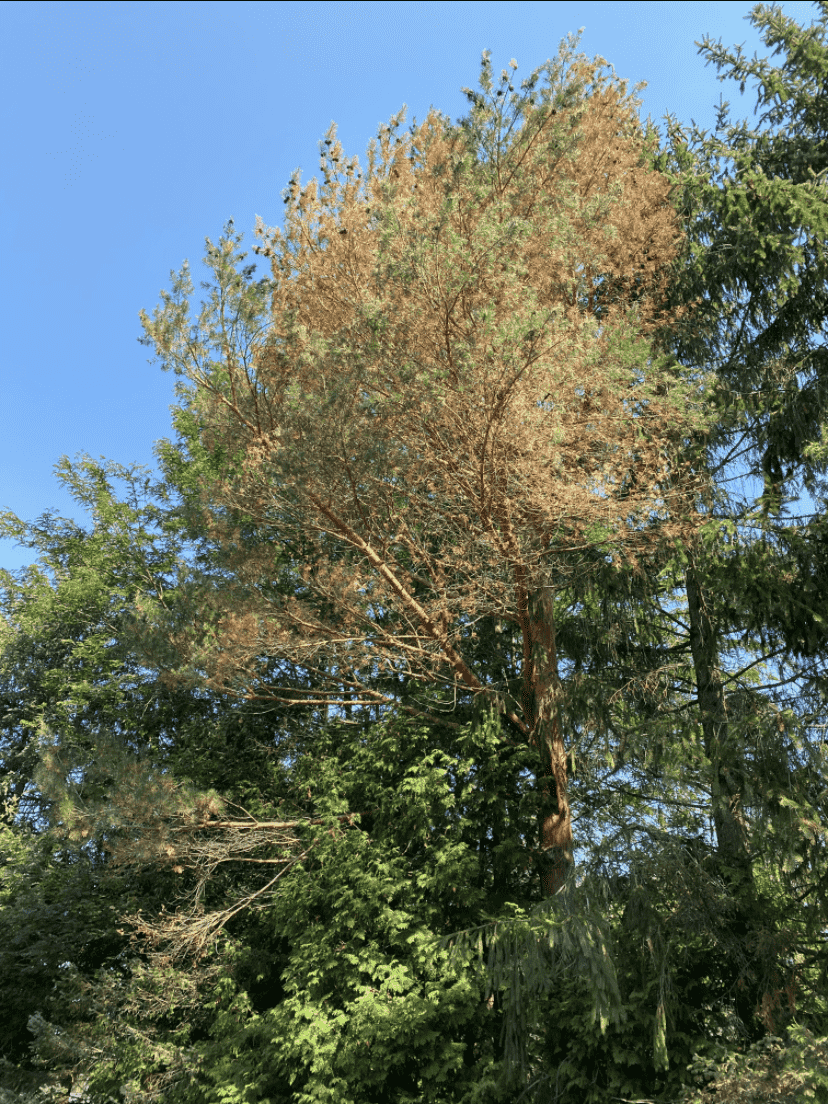
The stress of a bark beetle infestation can manifest with a bronzing of the foliage or cause branches to dieback.
Much like the pine shoot beetle, the pine weevils' damage is often noticed away from the trunk, at the tips or on the leader of a host tree. While pine beetles prefer to attack weakened or stressed trees, pine weevils often target healthy trees. Their favorite host includes Eastern White Pine and Scotch Pine. The following are some signs that you may have a pine weevil infestation in your trees:
- Bent or broken leaders: White pine weevils lay their eggs on the tips of the leaders, causing them to bend or break. This can result in a crooked or deformed appearance of the tree called a Shepherd's Crook.
- Brown or wilted tips: Infested leaders may turn brown or wilted as the eggs hatch and the larvae feed on the bark and tissue of the tree.
- Presence of frass: White pine weevils create small holes in the bark of the leaders and branches, which can be seen upon close inspection.
- Presence of pupal cases: As pine weevil larvae mature, they create cocoons or pupal cases on the bark of the tree, which can be seen as small, dark, oval-shaped structures.
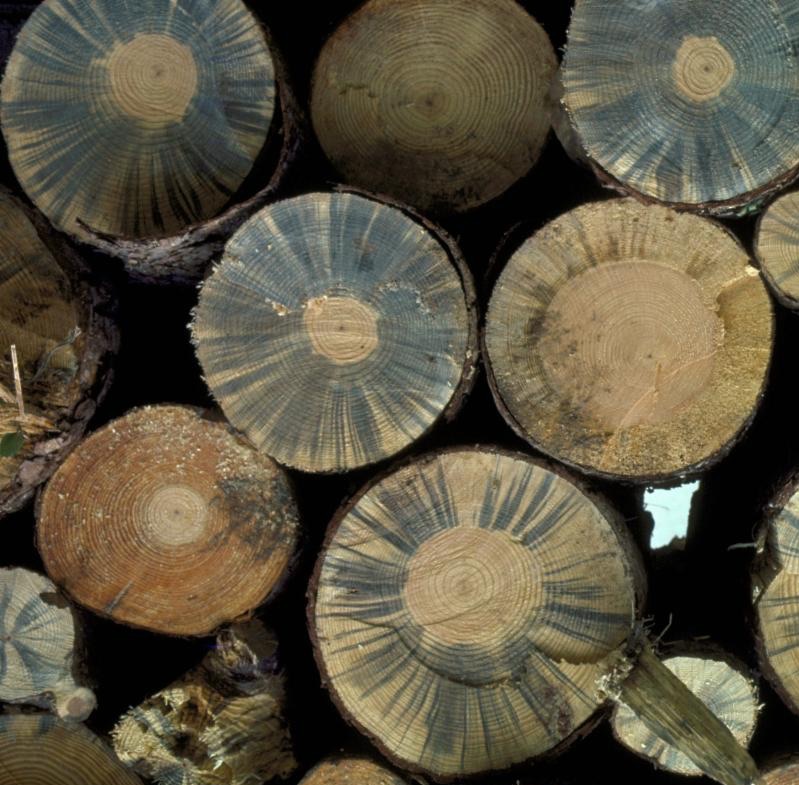
Close-up of blue-stained pine wood, a result of fungal infection linked to pine boring insects. The blue discoloration is a visual indicator of the tree's struggle against boring pests.
Another indicator of a pine boring insect is blue-stained fungus. Blue-stained fungus is a type of fungal infection that often accompanies infestations by pine boring insects, such as pine beetles. This fungus does not feed on the living tissue of the tree; instead, it colonizes the inner sapwood and heartwood after the beetles introduce their eggs and carry spores into the tree. The spores released by the fungus enter the tree's vascular system, causing a blue or grayish discoloration of the wood. This discoloration is often more visible on the inner layers of the wood rather than on the bark's surface, and it serves as a visual sign of the tree's response to the beetle invasion, as well as a potential indicator of the extent of the infestation.Maintaining the overall health of your trees is an essential preventive measure to deter these invasive pests.Proper watering, fertilization, and pruning can help keep the trees vigorous and better equipped to defend against pests like pine beetles. Monitoring and acting at the first sign of trouble can significantly reduce the impact on your pine trees and prevent further spread to nearby trees. By reaching out to your local arborist, they can conduct a thorough assessment, provide appropriate treatment options, and offer guidance on how to best protect your trees. Treatment options may include pruning/removing infested trees, injecting or applying a foliar treatment with an insecticide, or using bark beetle pheromones to discourage colonization. Let’s all do our part to ensure the pine trees in Western New York are around for many more years to come.
Find out more:
Schedule a consultation with a Monster Arborist
Cornell Cooperative Extension: Pine Bark Beetle, Southern Pine Beetle
USDA: More on White Pine Weevils
Monster Fun
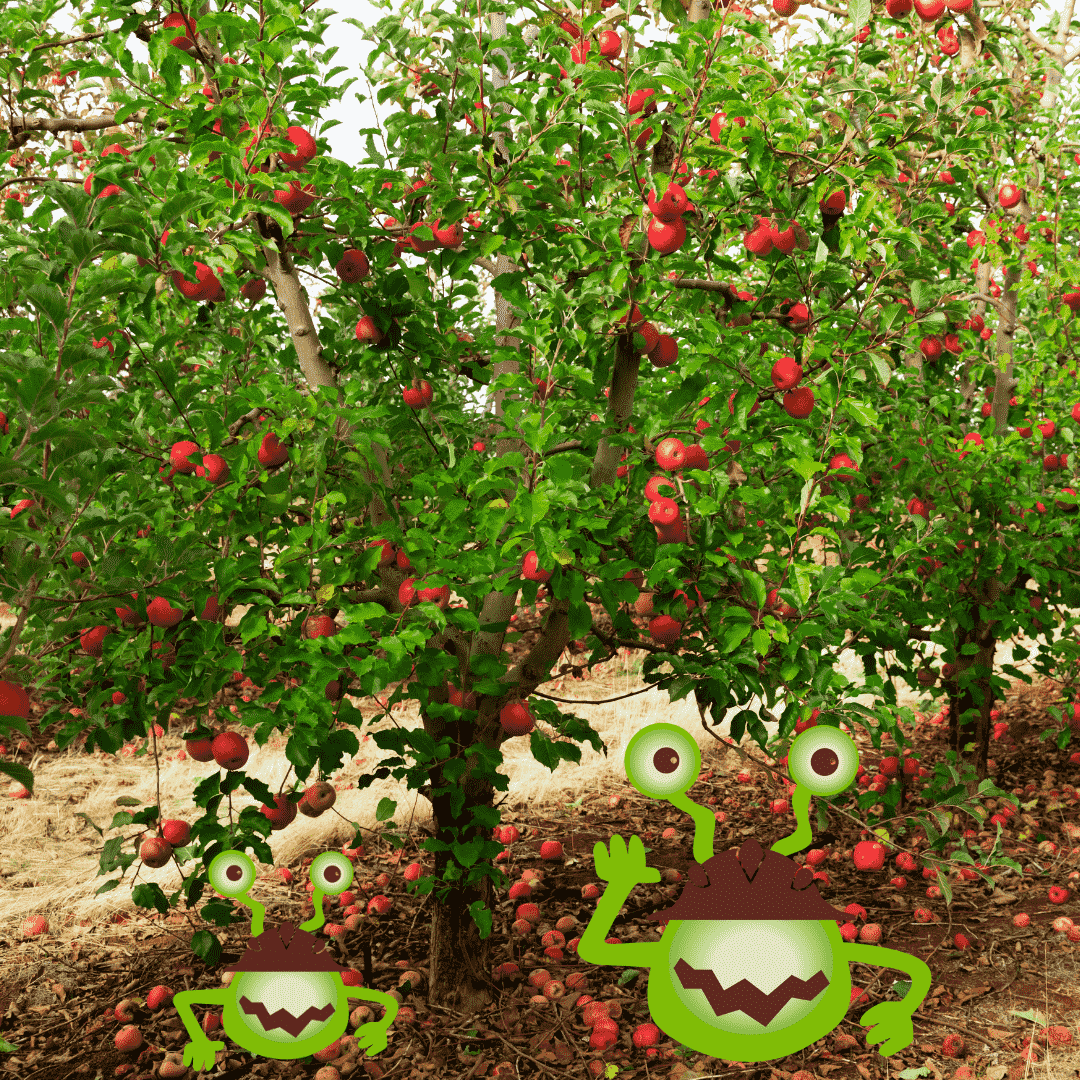
What is your favorite apple to pick?
A. Empire
B. Granny Smith
C. Cortland
D. McIntosh
E. Gala
Monster in the Neighborhood
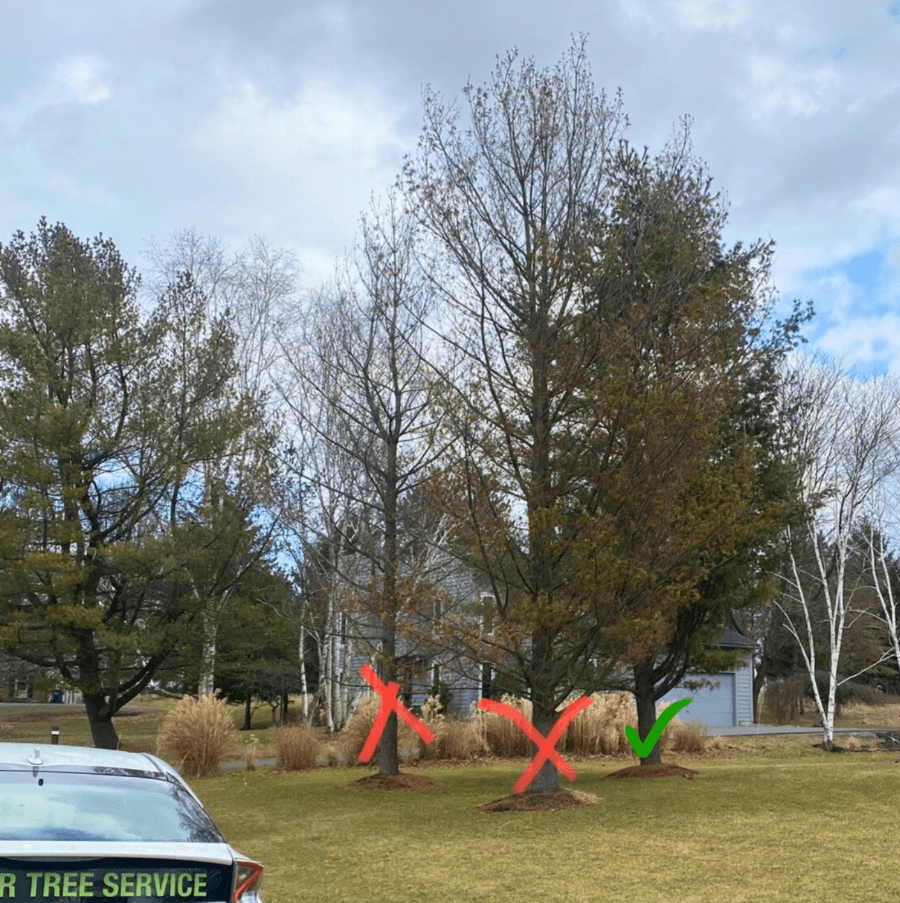
Both our general tree care and plant health care teams worked collaboratively to implement an integrated pest management plan aimed at addressing a bark beetle infestation at a property in Honeoye Falls. Three white pines on the property were affected by this bark beetle infestation. The drought during the past summer has led to an increased number of trees under attack from bark beetles. When trees undergo drought stress, their susceptibility to pests and disease problems also rises.
As a result of the overall decline in health, two of these trees were removed. The third pine received treatment through a trunk injection in order to control and mitigate the beetle population. We also recommended a watering and fertilization routine to aid in the tree's recovery. Our arborists will continue to closely monitor the remaining pine and administer protective measures as needed.
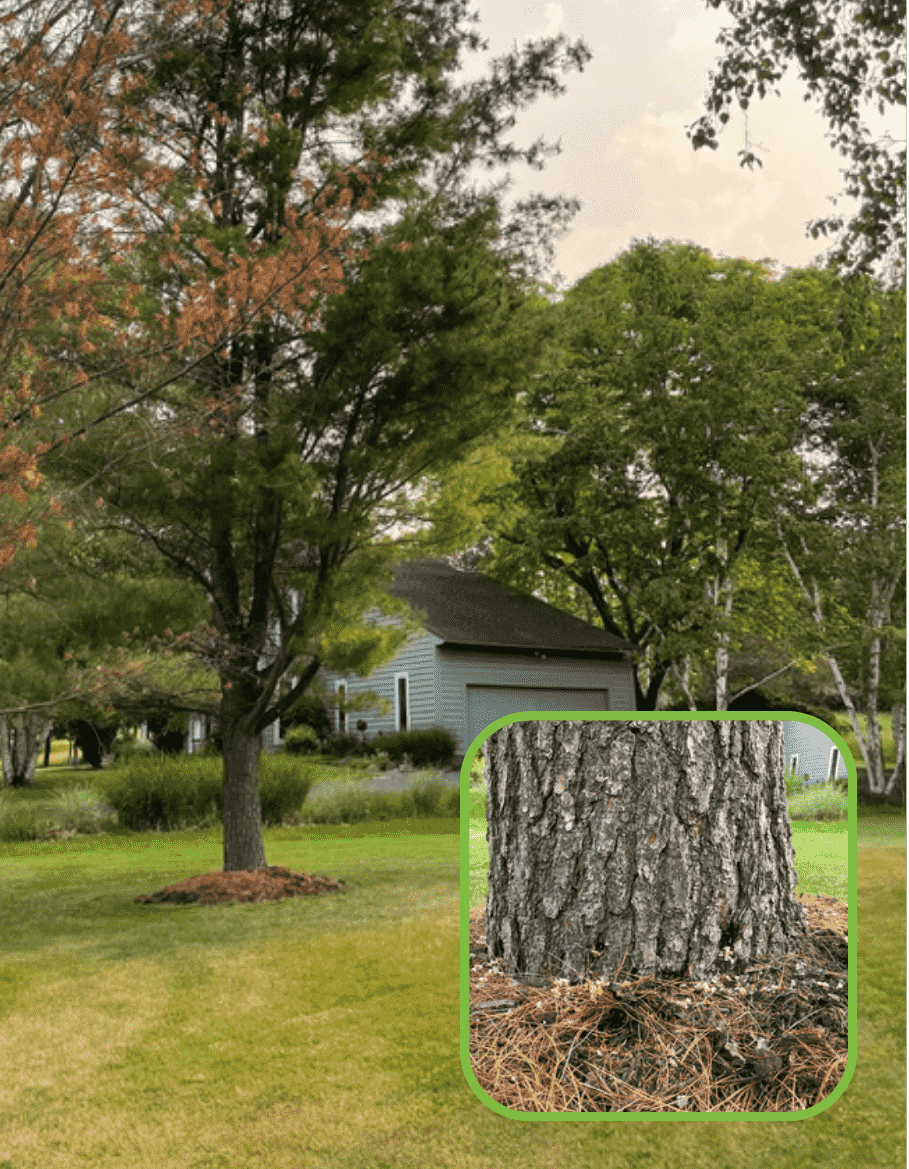
Right top: The two front trees (X) were selected for removal as they were unable to sustain themselves after the bark beetle infestation. The rear tree (Green Check) was selected for treatment as it was determined to be a viable tree.
Right bottom: The remaining White Pine was treated with a basal injection. Small holes were drilled into the tree, tapped with plugs, and injected with a product using a pressurized syringe. The plugs will be sealed over by the tree's natural growth and self-protecting compartmentalization process.
Tree Highlight
Scotch Pine
(Pinus sylvestris)
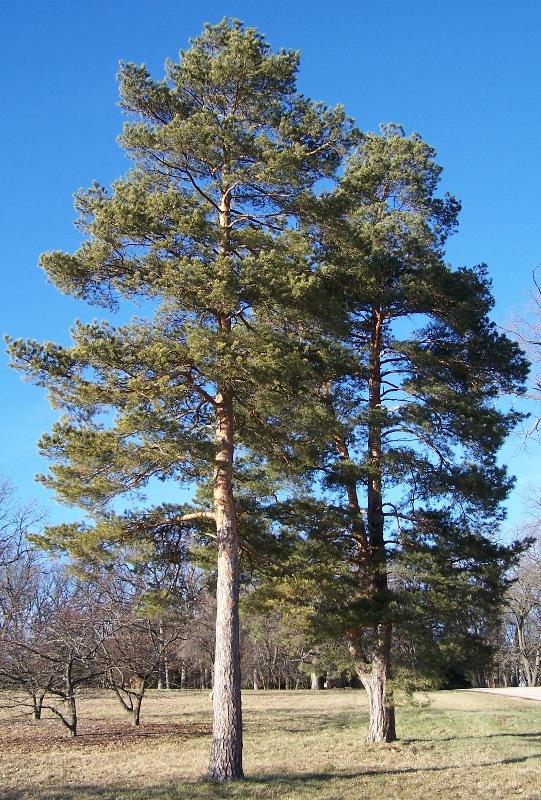
Also called: Scots Pine, Baltic Pine
Lifespan: on average 150-300 years
ID features: Height- can grow up to 60' tall and may have a spread of 40' when mature.
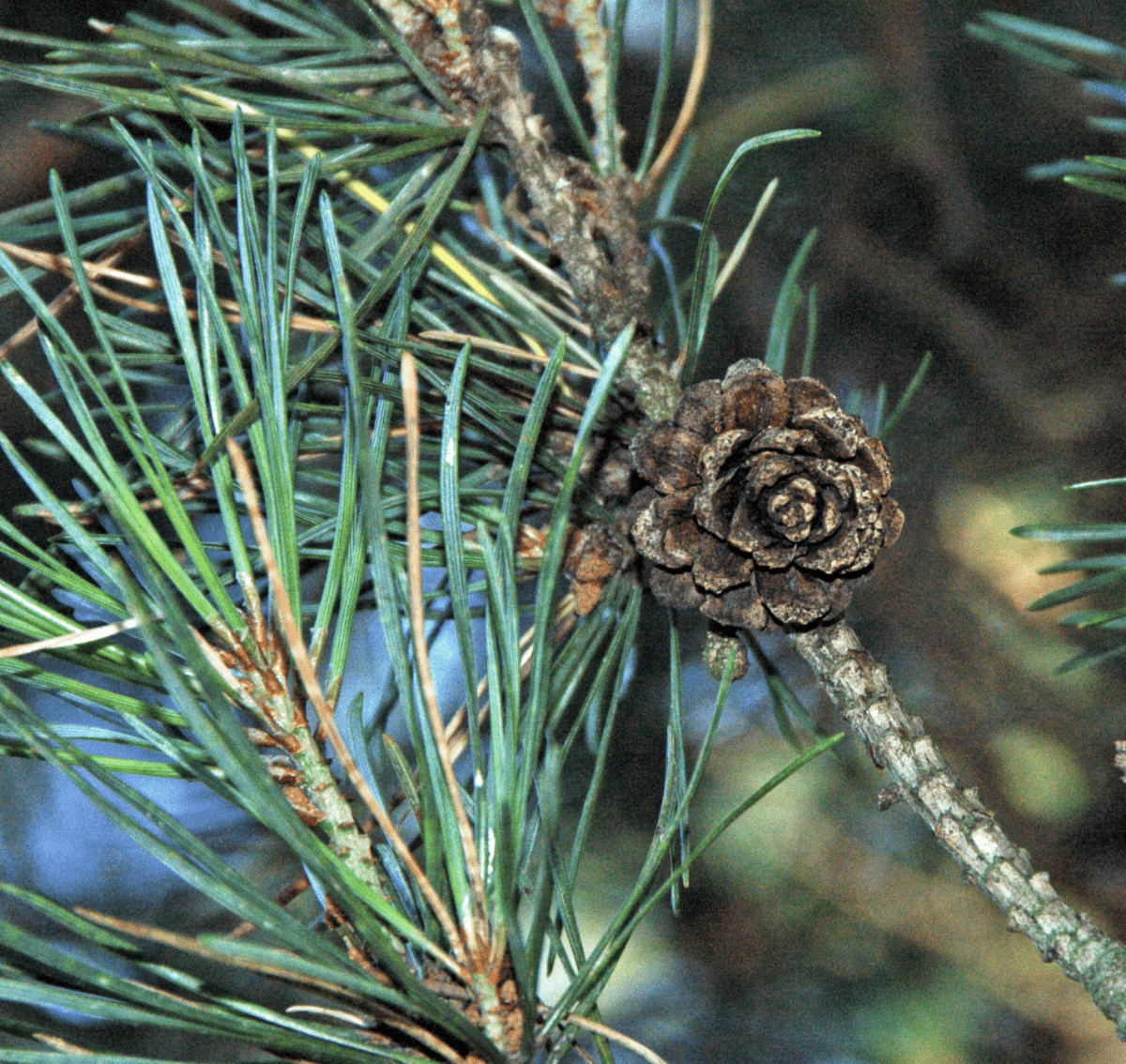
Needles - The 1.5 to 3 inch long, bluish-green needles are in pairs and spiral as they leave the twig.
Bark - Scaly, resembling the pieces of a jigsaw puzzle, with irregular thick plates that vary in color from dark gray to reddish-brown. The bark exfoliates with age and reveals a new red-orange layer of bark.
Fruit/seed - These trees self-pollinate, meaning the tree produces both male and female flowers on the same tree. The male flower releases pollen while the female flowers, once pollinated, are responsible for protecting and releasing the seeds.
Cones - They are 1-2 inches long, egg shaped, and are brown/grey in color. Cones will open at maturity.
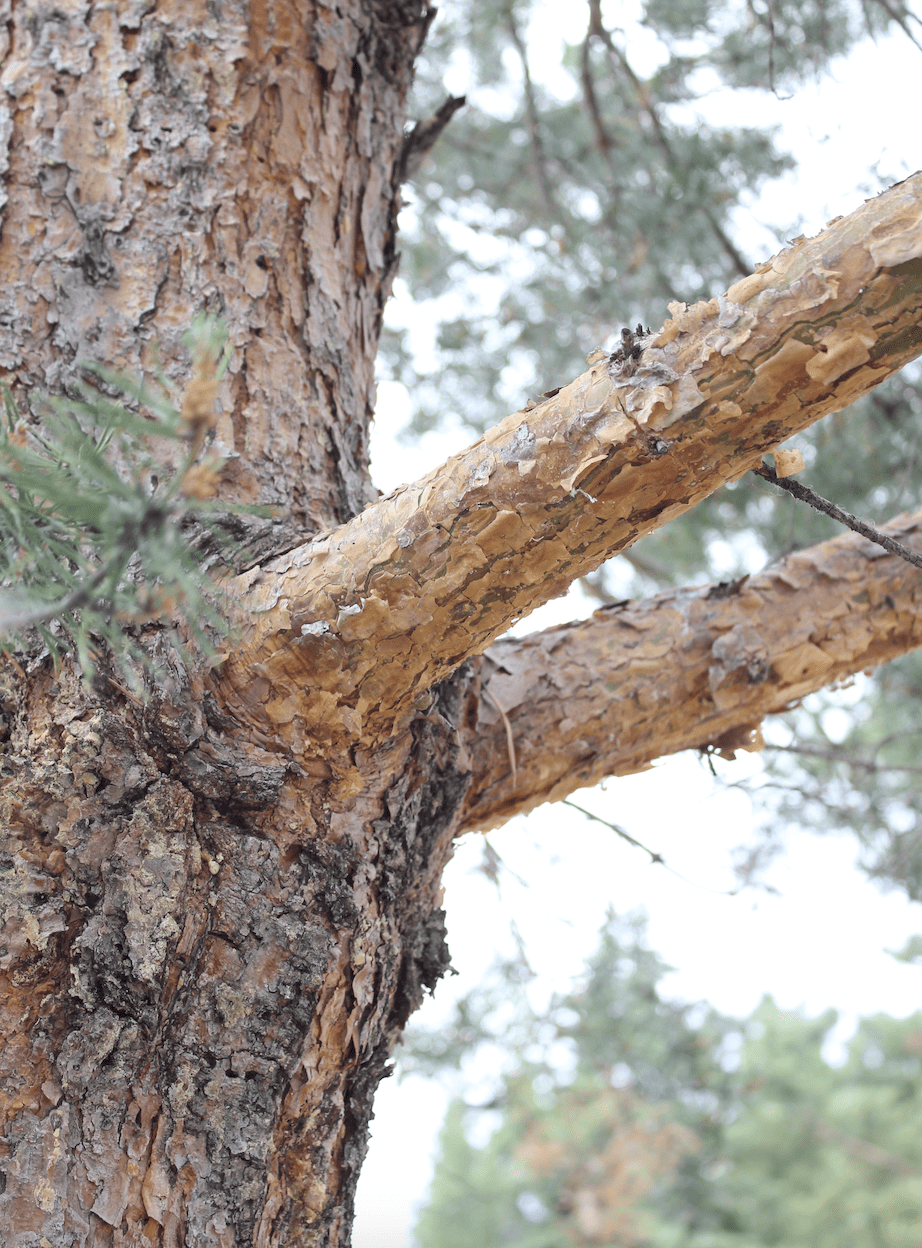
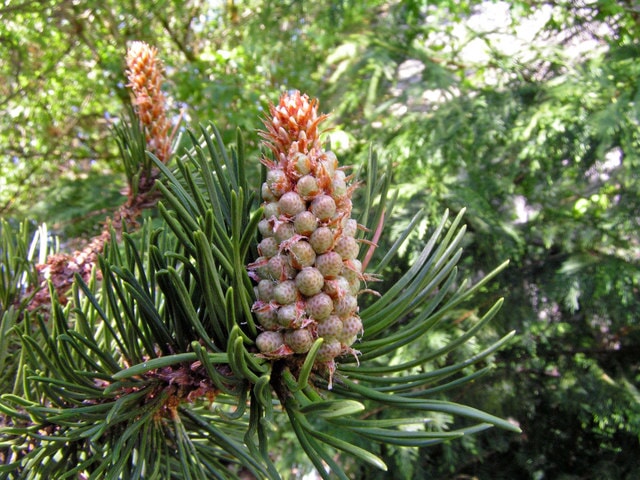
Fun facts:
-It's a popular Christmas tree because of its form and ability to hold onto its needles for a long time.
-It will sport cones of different ages as they do not fully mature until the following growing season.
Ask the Arborist
NYSDEC 3A Certified Applicator
ISA Certified Arborist
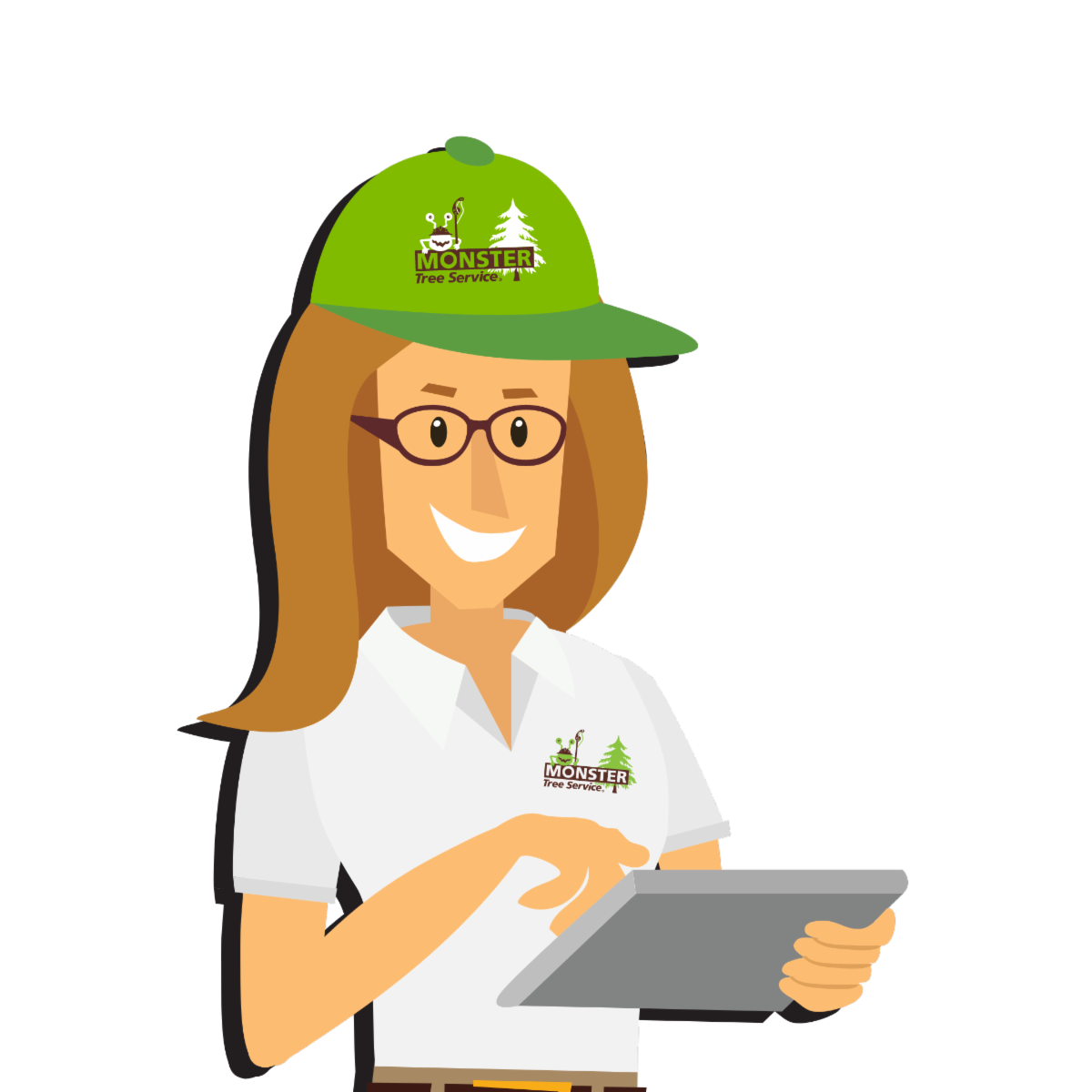
Q: What are some preventive measures I can take to protect my pine trees from invasive beetles and weevils, especially during peak infestation seasons?
A: Since pine bark beetles are often categorized as a secondary pest, it is vital to manage environmental stressors to reduce the likelihood of infestation! In addition to monitoring your trees during the growing season, water your trees during times of drought, apply a thin layer of mulch around your trees, and apply a fertilizer to increase vigor. Trees are just like us - if we are stressed, we are more likely to get sick too!
Q: What treatment options are available to manage pine beetle and weevil infestations, and how can I ensure the safety of other beneficial insects and wildlife while addressing the problem?
A: Pine beetle infestations can be managed by spraying a pesticide directly to the bark, or by a systemic trunk injection. For larger trees, we prefer to treat this pest via trunk injection as this approach can minimize secondhand environmental impact, and it provides long-term protection with a single application. Bark applications can be effective as preventative treatments on smaller trees. No matter what method of application is used, treatments are most effective when infestations are caught early!
Q: Who are the natural predators or beneficial insects that help control pine beetle and pine weevil populations, and how can I encourage a balanced ecosystem in my garden or landscape to reduce the risk of infestations?
A: Similar to other wood-boring insects, woodpeckers will snack on these beetles, and they are an important food source; however, they will not prevent the beetles from harming your trees. Other species of beetles, along with native wasps and flies, will prey upon pine beetles and help keep populations in check.
